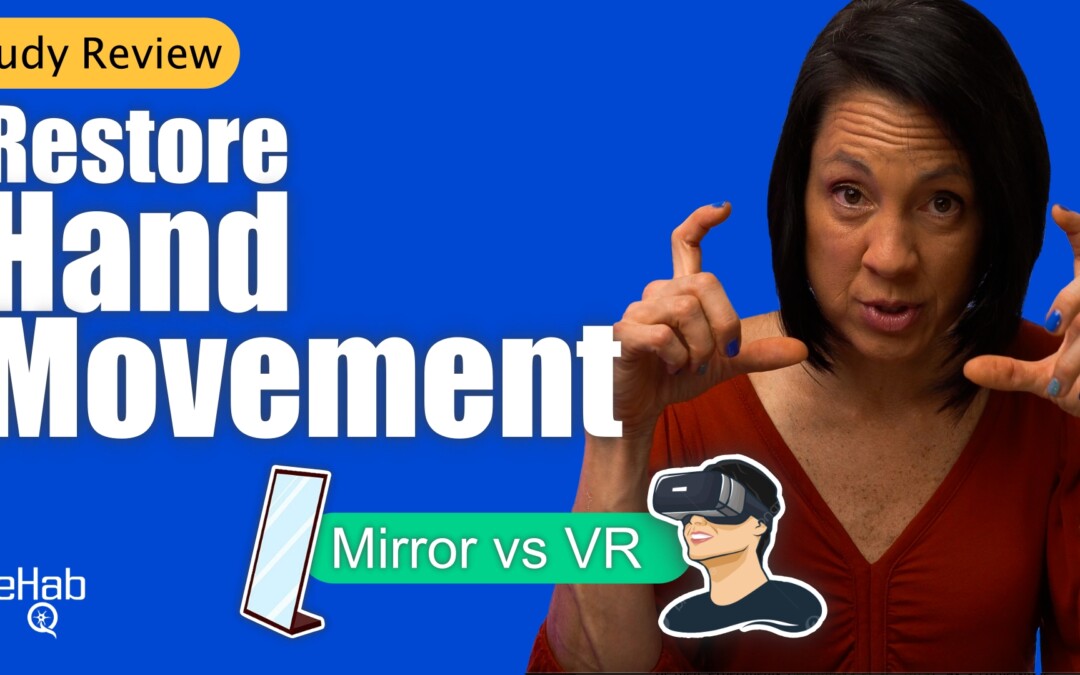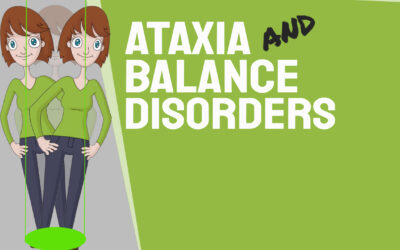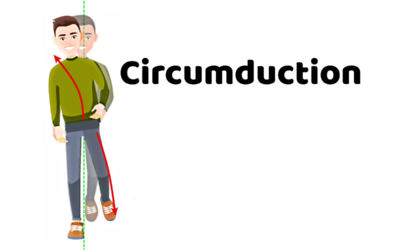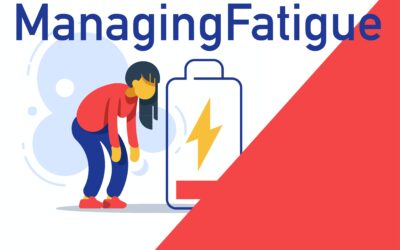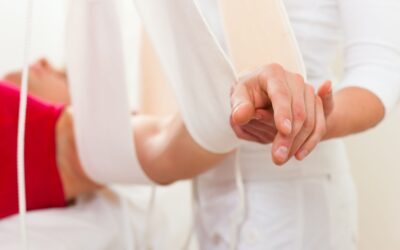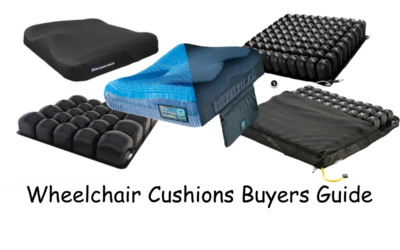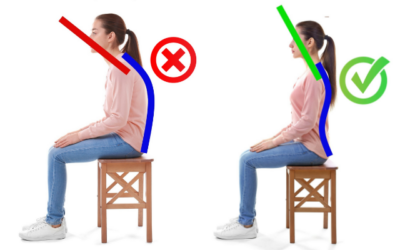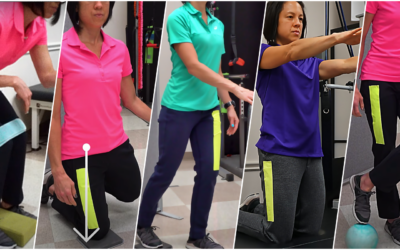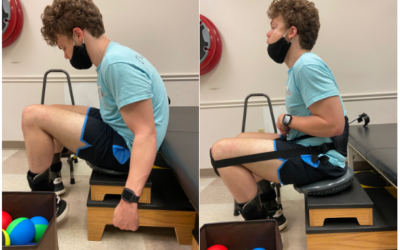Mirror Therapy & VR: Stroke Recovery for the Hand
If you’ve lost movement in your arm after a stroke, you’ve probably wondered: “Is my arm just weak, or is something deeper going on in my brain?”
That’s not because your muscles forgot how to work, it’s because the “wiring” in your brain that controls movement has been disrupted.
What Happens to the Brain After a Stroke
Normally, when you decide to move, say, to grab a coffee cup. Your brain sends messages down little “wires” (nerves) to your muscles. Your muscles move, then your brain gets feedback about where your arm is, and you adjust.
After a stroke, that wiring gets messed up. Sometimes the signal doesn’t get through at all. Other times, the message gets scrambled and your arm just doesn’t cooperate.
What Mirror Therapy Does
Mirror therapy is kind of like tricking your brain.
You put a mirror in front of your good arm so that when you move it, it looks like your weak arm is moving. And guess what? Your brain starts to believe it.
Why does this matter? Because seeing the movement actually wakes up the damaged side of your brain. It’s like giving that side of your brain a workout, even if your arm itself isn’t moving much yet.
Why It Helps
It gives your weaker side a chance to stay “in the game.”
It builds new connections in your brain (this is called neuroplasticity).
It works even if you don’t have much movement yet.
And the best part? You don’t need fancy equipment. Just a mirror and a little bit of time.
The Catch
Of course, it’s not perfect.
Some people find it weird or boring to stare at a mirror.
You can only do so many movements in a little mirror box.
It takes consistency. We’re talking daily practice, not once in a while.
That said, even with its limits, it can still be a really powerful tool.
The Future of Mirror Therapy
Researchers are now testing ways to make this idea even better. Some are using video feedback or even virtual reality to make the illusion stronger and more engaging. Imagine putting on VR goggles and seeing your weak arm move smoothly, that’s the direction things are heading.
How to Try It Yourself
- Get a mirror box or a simple mirror.
- Set aside 15–20 minutes a day.
- Move your strong arm, but watch the mirror so it looks like your weak arm is doing it.
- Stick with it. The brain needs repetition.
Final Thoughts
Recovery after stroke is never just about muscles. It’s about teaching your brain new tricks and helping it reconnect the dots. Mirror therapy might look simple, even silly, but it works because it taps into how your brain is wired.
So, if you’re stuck and feel like your recovery has stalled, this could be worth adding to your routine. Small, consistent steps really do add up.
Have you tried mirror therapy or VR exercises for your hand? Have you noticed any changes in movement or coordination? Share your experiences in our chat board where we can all learn from each other.
And if you want structured guidance, step-by-step exercises, and a full library of at-home recovery tools, check out our Rehab HQ Membership plans.
.
Articles you may be interested in
Hemiplegia: Fix a side bent trunk
Hemiplegia (weakness on one side of the body) can cause an unnatural "side bent" posture. This is sometimes also referred to as lateral trunk flexion. What is a "side bent" posture (lateral trunk flexion) with hemiplegia? A side bent posture is a “structural problem”...
Physical therapists are not as important as they think
I am not as important as I think I am. More broadly, physical therapists are NOT as important (to a rehab plan) as they may think. No, seriously. Ok, maybe half seriously. 2020 has been "unprecedented" (I couldn’t resist 🙃). I did what I thought I would never do....
Balance Training for Ataxia
Balance training is a critical component for anyone with ataxia. This is due to the fact that ataxia negatively impacts the balance system and is one of the leading causes of disability. Ataxia is caused by damage to the cerebellum. The cerebellum plays a MAJOR role...
5 Problems that Lead to Circumduction
Circumduction is a “walking problem” that is characterized by the leg swinging out to the side. This is typically a compensatory strategy to prevent someone from catching the foot on the ground. Before we dive into what might be causing you to swing the leg around the...
Managing Fatigue with a Neurologic Condition
Fatigue is a major problem with a variety of neurologic conditions. Feeling fatigued can be a HUGE barrier in your physical recovery and it can also dramatically impact your overall quality of life.That being said, managing fatigue might be the single most important...
Movement Retraining when dealing with Spasticity
Spasticity is an involuntary muscle contraction due to damage to the brain or spinal cord. This can cause muscle stiffness and pain. Additionally, involuntary muscle contractions cause the body to move in ways that feel out of one’s control. This is turn can create...
Complete Guide to Buying a Wheelchair Cushion
Wheelchairs are an extremely valuable piece of equipment during the neurologic recovery process. They provide a means of getting around when walking is not safe and/or is not possible. However, they also come with the risk of developing pressure ulcers. Pressure...
Most Neglected Post Stroke Shoulder Exercise
Post stroke shoulder retraining often includes moving the arm bone. Unfortunately, many movement retraining programs fail to address the shoulder blade (flat bone on the back of the shoulder and the thoracic spine. Moving the humerus requires proper movement of the...
Relearn to walk: Progression (with videos)
Are you super eager to relearn to walk? Walking is a HUGE goal for anyone who has lost that ability. Walking means different things to different people. And quite honestly, has far less meaning until you have lost this fundamental skill. All that being said, it is...
Product Spotlight: This tool improves trunk alignment
Better posture means better arm rehabilitation. Period. Said another way, proper trunk alignment is essential for efficient arm movement. However, in most cases, hemiparesis (weakness on one side of the body), paraparesis (weakness on the lower half of the body), and...

